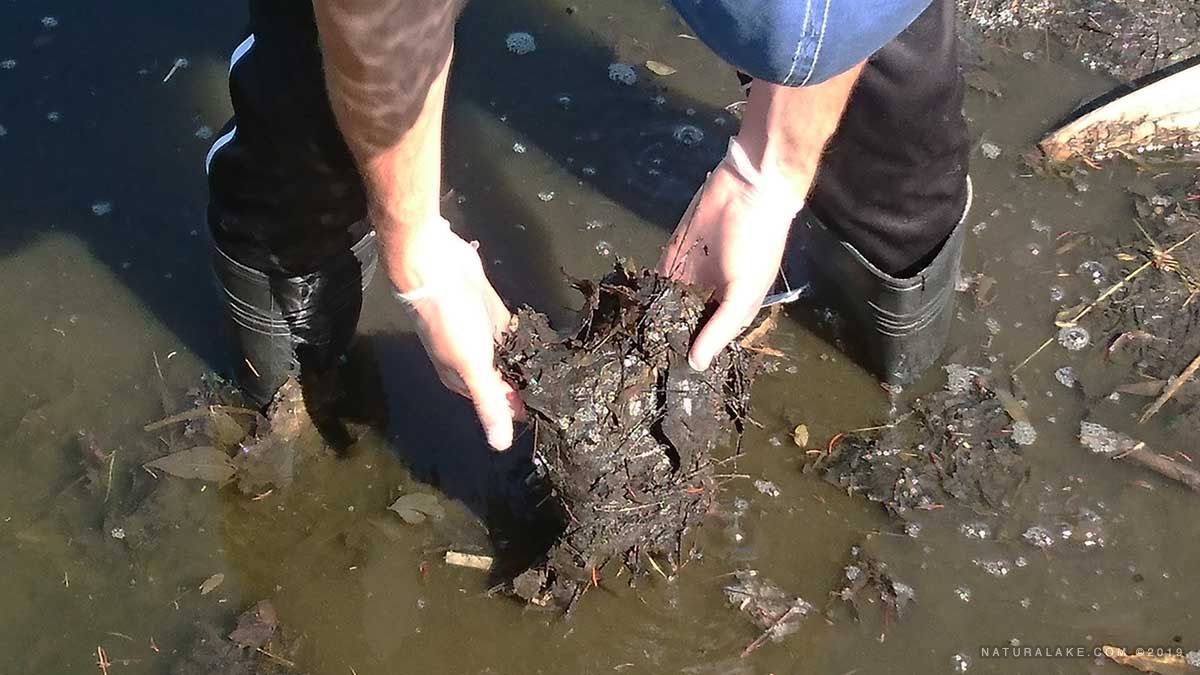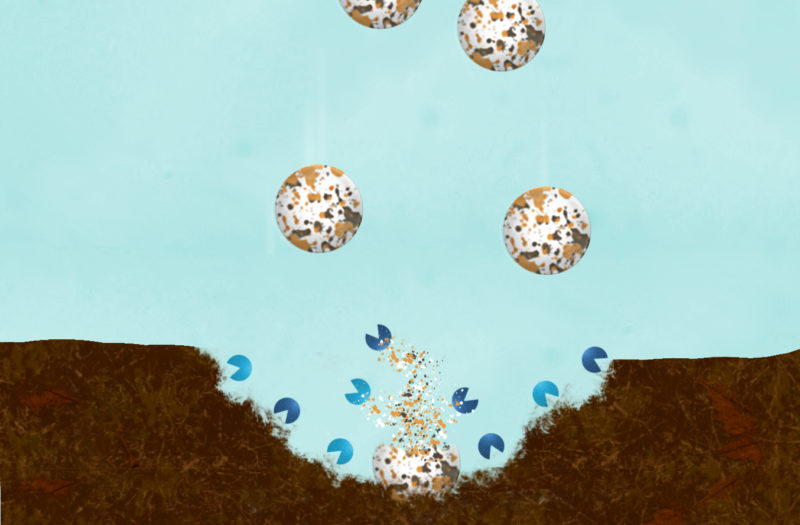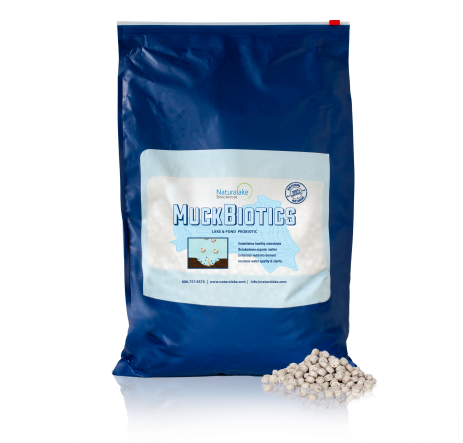What is Muck?
Muck is a combination of organic debris such as dead algae, plants, grass clipping, leaves, or animal waste and inorganic sand, silt and gravel that builds up on the bottom of lakes and ponds. Problematic muck, stores excess nitrogen and phosphorus that is readily available for algae and aquatic plants. In addition, too much muck can reduce water quality and clarity or create a toxic environment for fish or other organisms. Fortunately, muck can be treated and the health of the water body can be restored using several different techniques.

Pond Muck Treatment
The most common treatment for muck is physical removal by dredging. Dredging comes in two basic forms: mechanical and hydraulic. Mechanical dredging involves the use of heavy equipment, an excavator for example, that scrapes the muck off the bottom and discards the material onto a waiting barge or the shoreline. Hydraulic dredging involves suction equipment that takes a slurry of muck and water off the bottom and sends it via pipeline to another location to be discarded. An advantage of dredging is the process removes both the organic and inorganic compounds. Specifically, the phosphorus and nitrogen found in the muck are physically removed from the aquatic environment. However, dredging can be hazardous in some environments, prohibitively expensive, and can release pockets of phosphorus and nitrogen found in the underlying muck layers into the water column. Many times, because of pumping or hauling costs, the muck is discarded so close to the water body that the matter and nutrients can just drain right back in.


